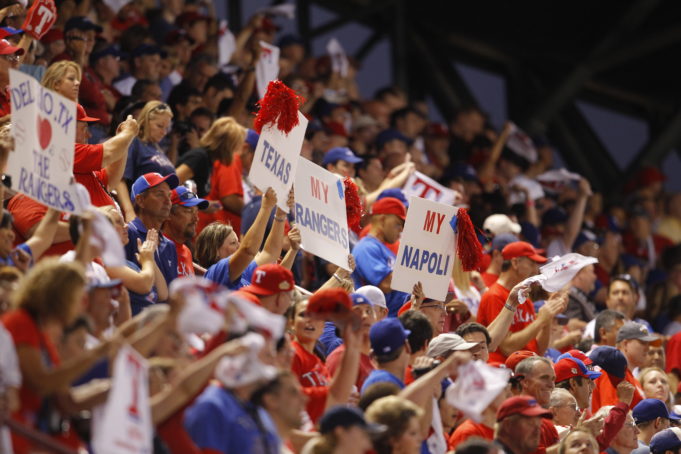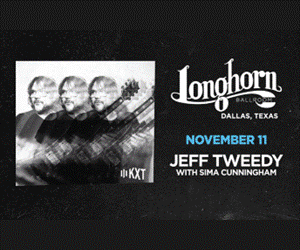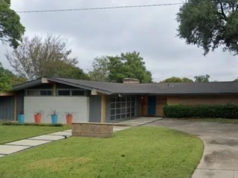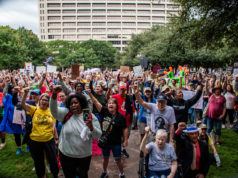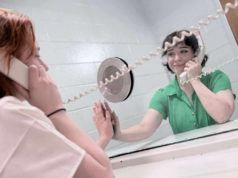Why did Tom Grieve say my name on the TV Friday?
OK, my first name is also a common noun, but he wasn’t referring to a pitcher rushing his delivery or a runner in a rush to beat a throw while going from first to third. He meant me.
Grieve and his broadcast partner, C.J. Nitkowski had noticed the Rangers’ home jerseys have script across the front reading “Texas.” The more common practice in baseball is to have a team’s geographical home printed on the road jerseys, while the home versions boast the name of the team’s mascot. The Rangers, however, use “Texas” on both. The announcers wondered why.
So I sent Grieve a text that read “My memory of why Texas is on the front of the home jersey is that it was part of an effort to brand the club with the qualities of the state a few years ago. We ended up doing a whole ad campaign around My Texas My Rangers. I think the jersey branding was related to that.”
The longtime Rangers analyst then read the message on the air. Later in the game, Rangers Executive Vice President of Communications John Blake confirmed my memory was correct (which caused them to say my name again, pleasing my parents who were watching the telecast in Fort Worth). While it’s always cool having an esteemed personality like Tom Grieve say nice things about you, one of the bonuses of the situation was it got me thinking about the ad campaign and how it came about.
It started intuitively, but was ultimately backed up by data. Nolan Ryan had taken over as team president in February of 2008 and the ownership group in which he participated took over the team in August of 2010. The new head of business-side operations, Chuck Greenberg, wanted to direct fans to identify the Rangers as their team, so we quickly shot and edited some new spots consisting of highlights mixed with fans telling the camera some variant of “these are my Rangers.” Though that advertising effort was an unscientific one, in the offseason, Greenberg directed resources toward something the Rangers had done only sporadically during my years there: audience research.
I found the process truly valuable. As a creative director, one likes to know to whom one is speaking (through the medium of television or radio or the internet). It helps you craft better material, because once you know what you’re trying to accomplish, you can find innovative ways of achieving it. As consultant Corky Hall of Stellus Consulting put it, “Give me the freedom of a tightly defined strategy.”
Hall’s firm had taken existing data and spearheaded new research initiatives so we could find out what our fans thought of us. We also wanted to know what they liked and what we could do to position ourselves to better reflect their preferences. One of the things we discovered (not that it was a surprise) was that people liked Texas symbols and values like loyalty, toughness, and friendliness they felt reflected those of Texas and Texans.
The Rangers had long sported a Texas flag patch on their jersey sleeves and the Lone Star State had found its way into plenty of branding elements over the years. The year before (2009), in fact, was when the club had made the move to have all its jerseys read “Texas.” Identifying with the state made sense instinctively, but now we had data to back it up. Out of those brainstorming sessions came a tag line that combined elements of the previous year’s end of season spots with the new research, one that encouraged people to take pride in their team the same way they did in their state: My Texas, My Rangers.
The next step was to figure out how to embody the concept in actual creative executions that would both encourage ballpark attendance and create the brand perceptions we wanted. The solution we adopted involved portraying what was then known as Rangers Ballpark in Arlington as a place where Texas values were ever-present. For television commercials, what I thought might be funny (and therefore memorable) was if the images symbolic of those values actually existed at the park. Some manifestations included:
Grazing
Longhorns grazed in the outfield, ostensibly to save on mower fuel. This spot starred Mitch Moreland and Head Groundskeeper Dennis Klein and no, those were not real cows in the outfield. We digitally manipulated some stock footage.
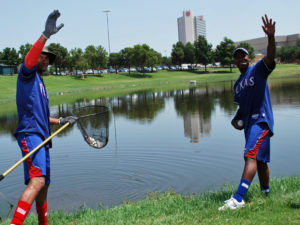
Bass Fishing
Texans love their bass fishing, so Alexi Ogando and Neftali Feliz demonstrated an innovative way of doing it, as observed by Pitching Coach Mike Maddox and Bullpen Coach Andy Hawkins. For props, we used old batting practice balls and some whole fish carcasses I bought at an Arlington Asian market. Yes, our marketing budget went to buy dead fish. I did check, by the way, to make sure the fish I purchased could actually be found in Texas lakes. I didn’t want a detail-minded angler hating on our spot because we used the wrong bass.
Pecans
A pecan tree grew in the upper deck, with Nelson Cruz and Thad Bosley in charge of cracking the nuts of the official state tree. I wandered the Central Arlington neighborhood in which I lived at the time picking up sticks and pecan fragments dropped from the local trees. For Bosley and Cruz’s part, shot in spring training in Surprise, Arizona, I had to trek to Tempe to find unshelled pecans.
Horns
Horses are pretty Texan, and the Rangers happen to have one working for them. During the Rangers’ first World Series run, the “claw and antler” craze consumed the local fandom. After this spot starring Rangers Captain began running, the mascot reported kids coming up to him doing the antlers sign.
Lots of Dogs
Grilling out with friends and family is a Texas tradition, but apparently some Texans can take it too far. This was one of the most fun shoots I ever did, and not just because Nolan and Ruth Ryan are great people (two of their granddaughters appeared in the commercial, too). Ballpark chef Cris Vazquez hauled out a humungous quantity of hot dogs and an enormous grill that morning and started cooking. We grabbed every cooler in the ballpark to ostensibly be full of hot dogs and the crew brought some ice chests from home, too.
If you don’t watch the Spanish-language version, too, you do yourself a disservice. We knew Nolan would be reluctant to speak a phrase in Spanish, so we recruited his former teammate Jose Guzman to help. The scheme was that Jose was going to say the Spanish line, but we plotted all along to try to get Nolan to say it. So we cut a take where Jose said the line, then I asked Nolan if we could try one more thing. Nolan guardedly agreed, and Jose, with help from team videographer Hugo Carbajal, coached him in what is, as far as I know, the Hall of Famer’s only appearance ever speaking in Spanish on camera.
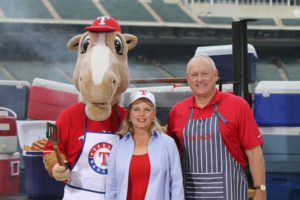
This spot got a lot of discussion on the Ticket radio station, too, thanks to a shot Carbajal added in the edit of a well-inked lady eating a hot dog.
Nolan’s image as the quintessential Texan helped the My Texas, My Rangers campaign a lot. We referenced him in the copy (it was ostensibly his idea to put in the pecan tree and, in another spot I didn’t mention above because it’s unfortunately not available to view online, an oil well along the right field wall).
We created other media besides television. Billboards offered baseball variations on state themes, like its country-and-western dancing and miles of open road.
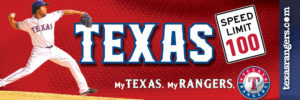

We had radio, too. Can Texans sometimes exaggerate? We decided Texas Tall Tales was a worthwhile theme, so Eric Nadel voiced a series of spots positing Texas ties to certain team-related items. For instance, did you know the word Tejas means “he who hits with the strength of a bear?” Or that the dye in the Rangers’ blue uniforms is made from organic bluebonnets? Or that Nolan Ryan gives the Rangers employee of the year a heifer from his personal herd? Of course, those are all made up, but Eric would go on to emphasize that it was not a Texas Tall Tale that the Rangers did, in fact, embody many of the good qualities of the Lone Star State. You can check out some samples of the radio campaign here.
We also didn’t want to turn off non-Texans, so we did some radio and TV themed as “Welcome to Texas,” that suggested you didn’t have to be from the state of Texas to cheer for the team named “Texas.” And when the pennant race heated up, we did some new spots that hit on Texas pride in retaining the American League title (which that 2011 team did).
When one thinks of the Texas Rangers, one inescapably thinks of the state – heck, it’s the team’s first name. In the latter part of the first decade of the 2000s, the team made that connection a little more explicit. Tom Grieve noticed.



